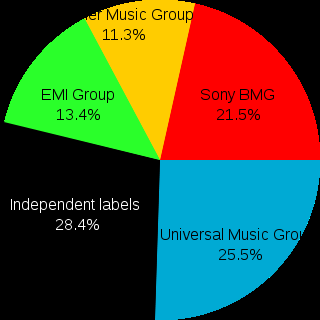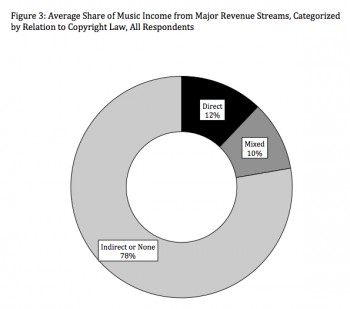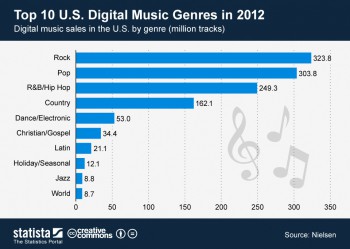Music Business
The Manifesto Of Independents
1. We, the independents, will work to grow the value of music and the music business. We want equal market access and parity of terms with Universal, Warner andSony, and will work with them in areas where we have a common goal. We will work to ensure that all companies in our sector are best equipped to maximize the value of their rights.
2. We support creators’ freedom to decide how their music may be used commercially, and we will encourage individual artists and labels to speak out directly against unauthorized uses of music as well as commercial uses of music that stifle that freedom. We support creators’ right to earn a living from their work, which should be respected as a basic human right.
3. We support independent music labels that treat their artists as partners and who work with them on reasonable commercial terms, noting that labels are investors who deserve a fair return alongside their artists.
4. We promote transparency in the digital music market; artists and companies are entitled to clarity on commercial terms.
5. We oppose further consolidation in the recorded music, publishing and radio sectors since this is bad for independent music companies, their artists and fans, as it reduces market access and consumer choice.
6. We support initiatives which confront market abuse, and which aim to adapt competition laws to promote independent market access and foster collective responses by independents to potentially anti-competitive conduct by large operators.
7. We recognize that all independent music businesses contribute to local culture, diversity, jobs and export opportunities, and multiply the economic success of related industries. We will ask governments to promote and support the independent music sector in securing access to finance and tax credits, and to local and international markets.
8. We hold that collecting society revenues must be allocated and distributed accurately and transparently. This includes distribution of unclaimed money that logically belongs to the independents. We will push for the independent sector to be formally represented in the governance of collecting societies, with trade associations being eligible for board seats.
9. We support the creation of a worldwide track-level sound recording rights database, subject to neutral governance and ownership, to ensure accurate distribution of rights revenues to their rightful owners.
10. The independents will, as always, actively encourage and support new commercial opportunities for music, and will continue to support and develop new, legitimate business structures and partnerships.
Props to HDD & AlLindstrom
Study: Copyright Law Is Only Benefiting a Tiny Sliver of Musicians
That’s according to an academic study just released by Northwestern University School of Law, which found that a vast majority of artists are not motivated by copyright protections, and frequently not benefiting from them. Instead, the slim prospect of widescale popularity, fame, and recognition may be far stronger lures.
Even among those working in the real world, a large number of successful artists generate revenue from areas that are onlyindirectly linked to copyright protections, if at all, including live performance, session gigging, merchandising, or instruction. Only those at the top are reaping large benefits from copyright (and therefore, care about it).
“Rather than providing marginal incentives to create to all musicians at all times, copyright law mostly affects the revenue of the highest‐income musiciansin a direct fashion.
This is not a surprise, given the prevalence of winner‐take-all markets in the entertainment industry.”
The study, conducted by Northwestern assistant professor Peter DiCola, used a previously-released survey of 5,000 musicians (through the Future of Music Coalition), primarily to determine the actual sources of income. The intent was to find out (a) where musicians are making their money these days, and (b) how important copyright is to those revenue sources.
Here’s a breakdown of where musician incomes are derived.
The harder question is how much musician behaviors and choices would change if copyright protections were strengthened (or respected more). Indeed, this is an area the researchers discussed, noting that musicians are often adaptable creatures that shift depending on revenue prospects (conducting to teaching, composing to session gigging, etc.)
Beyond that, there’s the very real possibility that better copyright is better for all musicians and creative companies, directly or indirectly. Indeed, there’s a very defensible argument that the entire ecosystem is now suffering. ”For instance, better enforcement could help record labels’ bottom lines to an extent that the labels could begin offering larger advances and greater support to artists again,” DiCola concedes. “Nothing in the [Future of Music] survey, which focused on the money that reaches musicians’ bank accounts, can confirm or deny this story. [DigitalMusicNews]
“Thus, it is important to remain open to the possibility that copyright enforcement might indirectly benefit musicians by strengthening the system in which they work.”
SoundExchange Ends Record Setting Year In Distributions
SOUNDEXCHANGE has reported a new record with total year-end royalty payments reaching approximately $462 million (up 58% from the prior year). The fourth quarter 2012 distribution also increased with more than 22,000 payments totaling approximately $134.9 million, a nearly 10% increase from its Q3 2012 distribution of $122.5 million.
The royalties are paid by Internet radio, satellite radio and cable radio services for their performance of sound recordings, and are distributed by SOUNDEXCHANGE to recording artists and record labels.
“SOUNDEXCHANGE’s increasing annual royalty payments are a positive indication of where the industry is heading. As digital radio continues to grow, so should the amount that performing artists and rights owners receive for the use of their content,” said SOUNDEXCHANGE Pres. MICHAEL HUPPE. “Our distribution represents another record-breaking year for SOUNDEXCHANGE, but more importantly, it means more money in the pockets of the creators of music. We’re optimistic about the industry’s future, and look forward to maximizing digital performance royalties for the people we serve and finding new ways to propel the music industry forward.”
Props to All Access & AlLindstrom
Whitney Houston, EDM, Vinyl: Inside The Music Stats of 2012
Last week the Nielsen Company and Billboard released their annual year-end report on music sales. And for industry watchers, it was seven pages of pure statistical deliciousness.
The boldface highlights have already been trumpeted. As measured by Nielsen SoundScan, overall music sales reached an another all-time high, with unit sales increasing 3.1% over last year. Overall album sales dipped 4.4%, from 331 million in 2011 to 316 million, but that doesn’t seem so surprising—or drastic—given that we’ve been lamenting the death of the album for years.
More albums were sold by digital music stores than by any other type of retailer, including mass merchants like Best Buy, for the first time in history. Yet vinyl continued its improbable rise (which I wrote about more extensively last year) as LP sales soared 17.7% to 4.6 million, setting a new SoundScan Era record for the fifth consecutive year.
On the artist front, Adele sold 5.1 million albums in 2012 after moving 5.8 million in 2011, making 21 the first album in SoundScan’s history to be the top seller two years in a row. Taylor Swift moved 3.1 million copies in the last 10 weeks of 2012, basically ensuring she’ll be among music’s top earners in 2013. Carly Rae Jepsen’s “Call Me Maybe” and Gotye and Kimbra’s “Somebody That I Used To Know” sold a lot of copies—6.5 million and 6.8 million, respectively—but we already knew that.
Some of the most fascinating stories, however, are located beyond the first page of Nielsen’s report. Take, for instance, the sales figures for individual genres. Of the five most popular genres in terms of total tracks sold, the fastest-growing is Dance/Electronic, with sales surging 35.6%.
That’s not much of a surprise, as the story of EDM’s rise has been told by many, including FORBES. But what might shock some people is that, despite the fact that a sizeable portion of EDM tracks are distributed for free online, the Dance/Electronic genre’s sales of 53 million are already about one-third the size of the market for Country. That should serve as proof that EDM isn’t going away anytime soon.
Of the remaining three biggest genres, Pop sales are essentially flat at 304 million, Rock grew 11% to 324 million tracks and R&B/Hip-Hop dipped 5% to 249 million. Rock’s roll was boosted in part by Mumford & Sons’ Babel, which moved 1.46 million copies, making it the No. 4 album of the year in terms of overall sales. The group earned the No. 6 spot last year for Sigh No More.
Mumford & Sons and Adele weren’t the only artists to post two huge years in a row. Katy Perry earned the most airplay for the second consecutive year, thanks to her Teenage Dream re-release. She and Michael Jackson remain the only two artists with five No. 1 hits from the same album.
Another interesting statistic: out of all the decades from the 1940s onward, the era that got the biggest boost this year in terms of digital album sales was the 1980s. That decade’s music got a bump of 32.7%—more, even, than the music of the 2010s.
Why? In addition to continued demand for the music of the aforementioned King of Pop and other iconic artists who were particularly prolific in the 1980s, the decade’s music got a massive boost from Whitney Houston. The late diva sold 1.8 million albums last year, No. 7 among all artists.
Finally, the last page of Nielsen’s report contains one of the most crucial clues to the future of music: streaming stats. “Call Me Maybe” was the year’s most-streamed song with 119 million audio and video plays–20 times the number of singles the song sold.
As more and more people move their music consumption to services like Pandora and Spotify, the mp3 might just be going the way of the CD. And that could throw a major wrinkle into next year’s report. [Forbes]





